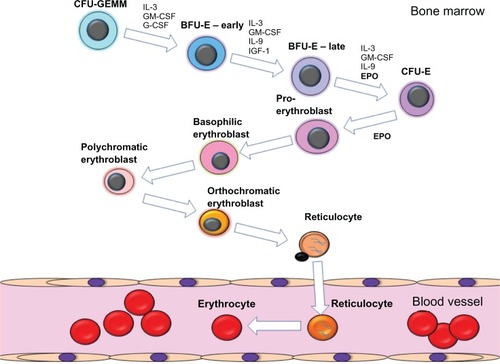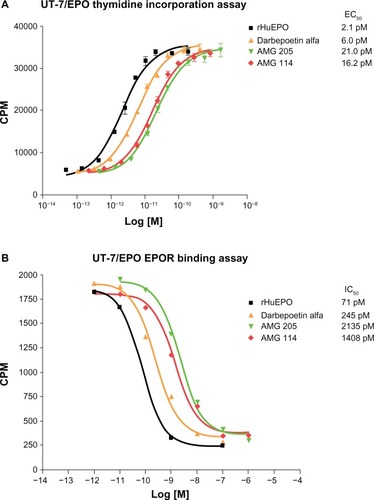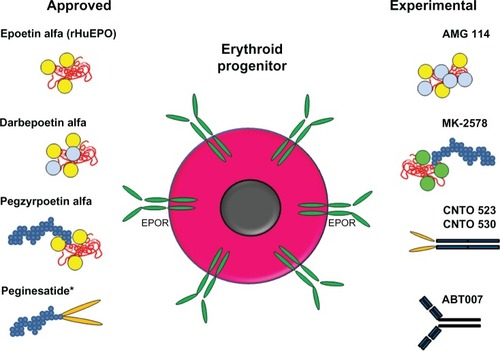Figures & data
Figure 1 Schematic diagram of the process of erythropoiesis. The various stages of erythroid differentiation are shown including the key cytokines that are involved in the proliferation, survival and differentiation of the erythroid progenitors.

Figure 2 In vitro proliferation activity and EPOR binding activities of rHuEPO, darbepoetin alfa, AMG 114, and AMG 205 glycosylation analogs.
Abbreviations: CPM, counts per minute; EC50, 50% effective concentration; IC50, 50% inhibitory concentration; EPO, erythropoietin; EPOR, EPO receptor; rHuEPO, recombinant human EPO.

Table 1 Summary table of the in vitro proliferation EC50 values and the IC50 receptor binding activity in rHuEPO competition assays using UT-7/EPO cells
Figure 3 Schematic representation of approved and experimental ESA molecules.
Abbreviations: EPO, erythropoietin; EPOR, EPO receptor; ESA, erythropoiesis stimulating agent; PEG, methoxy-polyethylene glycol; rHuEPO, recombinant human EPO.
